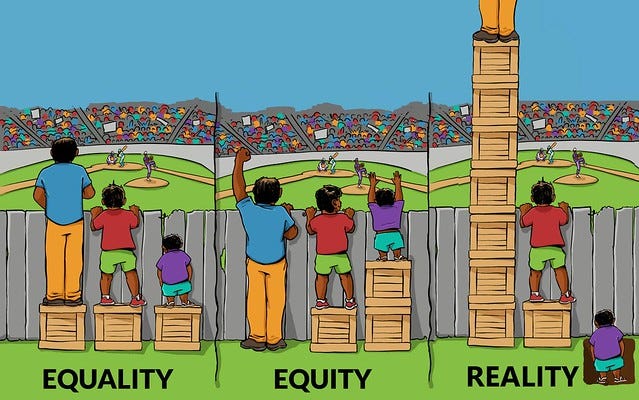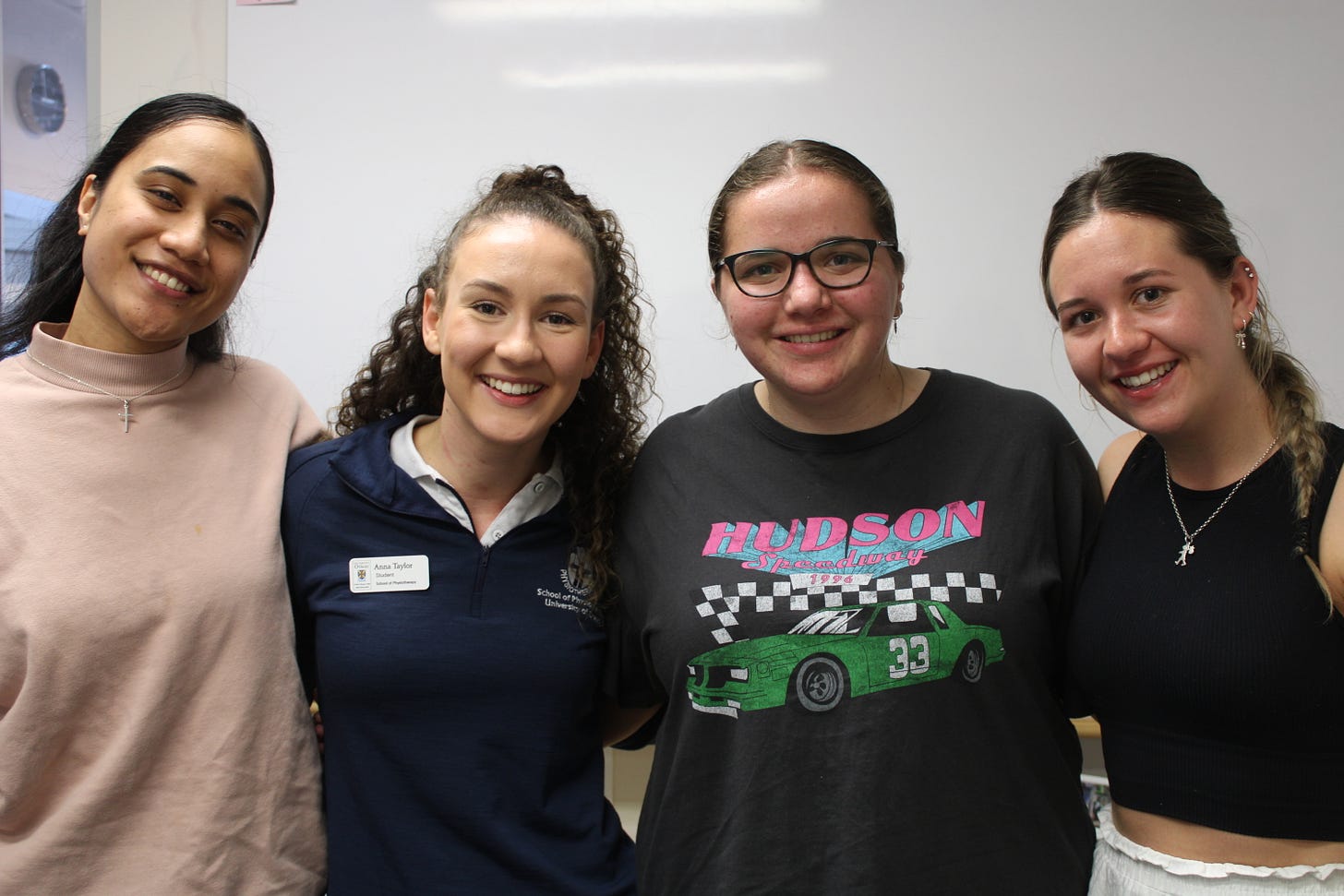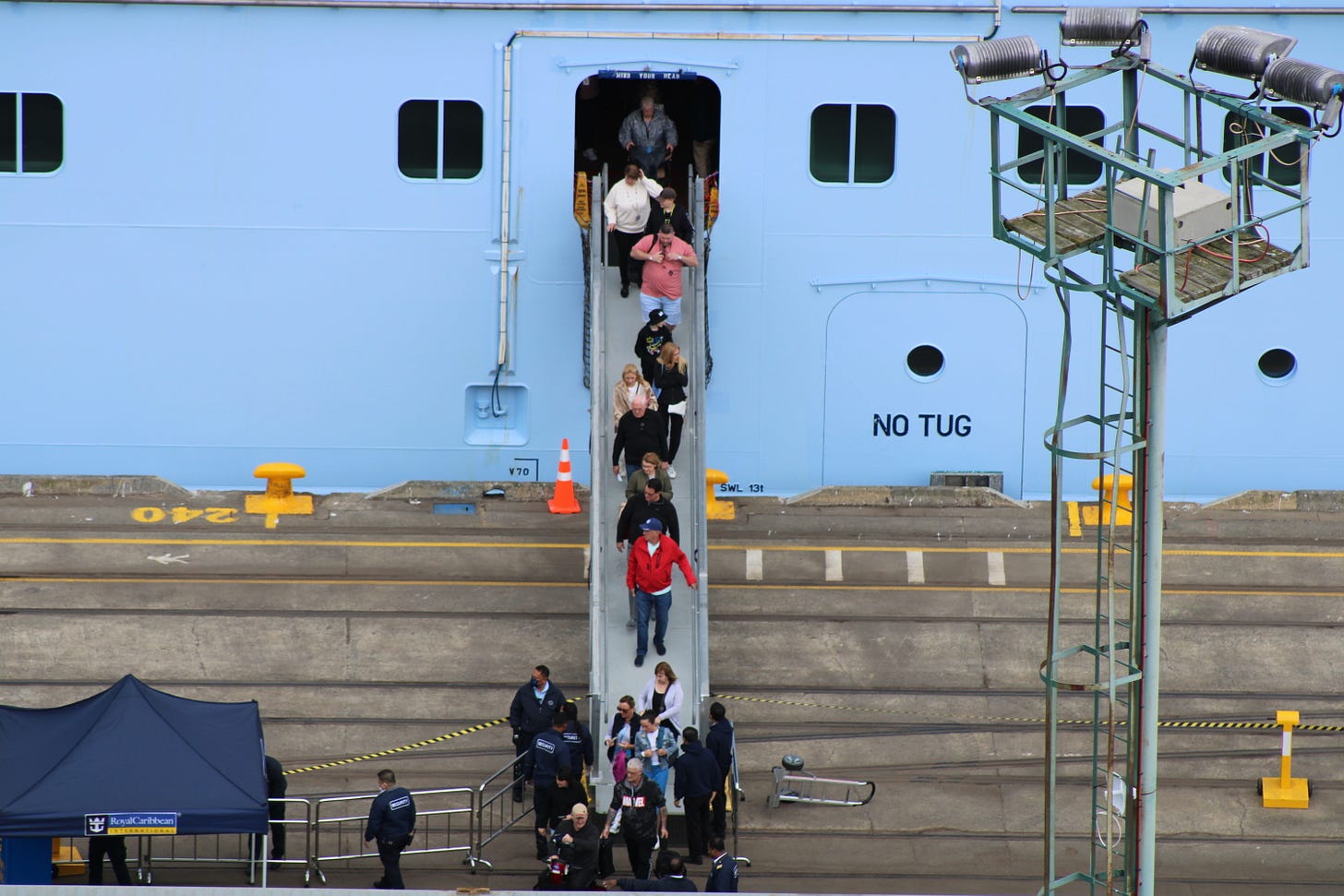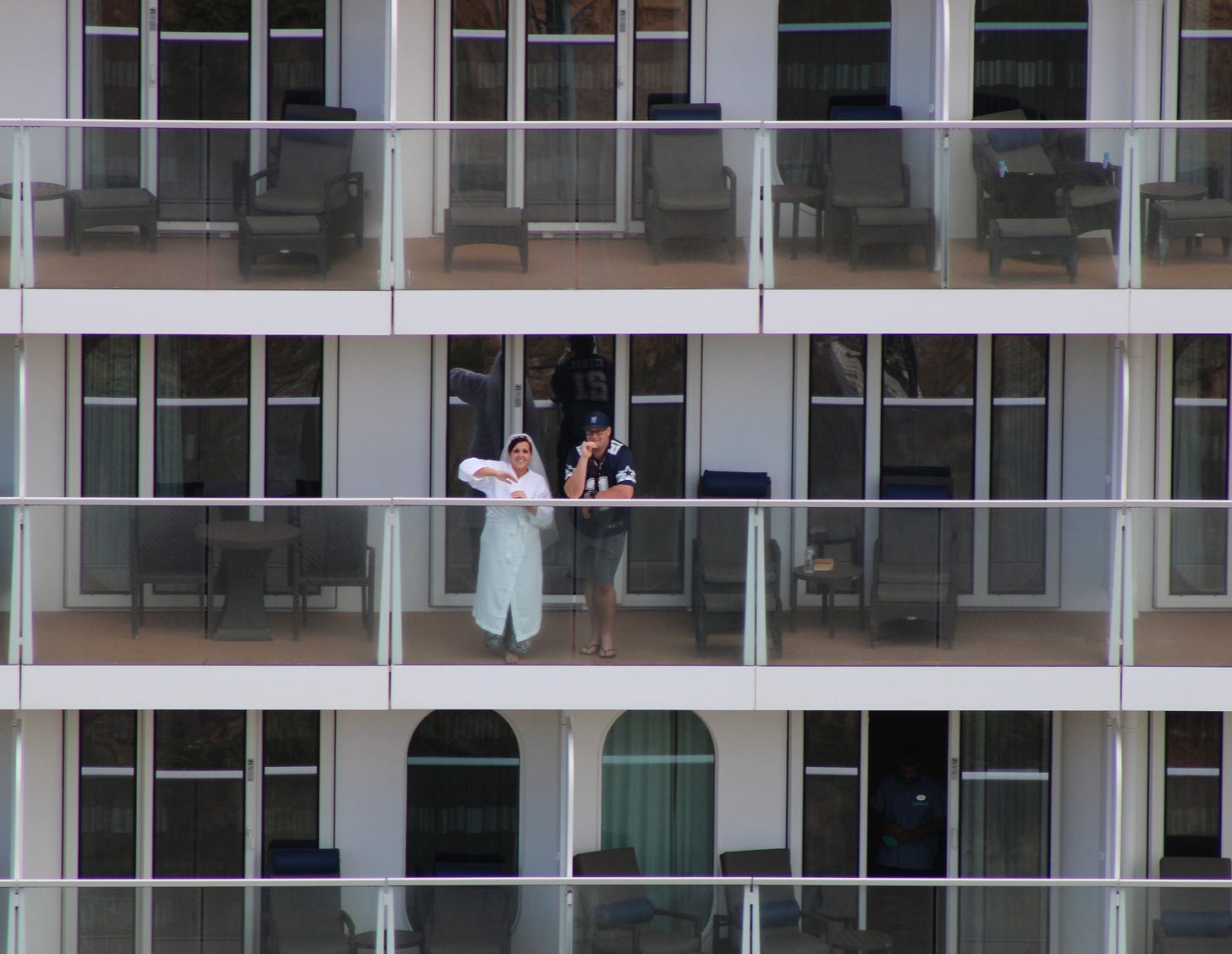The pharmacist of Kawakawa - and other Dunedin success stories
‘You’ll see these flash-as cars going into their school, and then at ours you will see these little bombs’
No doubt you’ve seen the above illustration.
This week’s story is about equity, and how Dunedin is playing an important part for the future of the country’s health system.
This week I had a sit-down interview with four young women due to graduate with degrees in physiotherapy, oral health and pharmacy.
What united them was that they all came from low-decile schools, and were some of the few students from their year to go to university.
Out of interest, and be honest, how many of you could pinpoint on a map their hometowns: South Auckland, Levin, Kaikohe, Kaitaia?
Imagine coming to study the competitive Health Sciences programme in Dunedin, and the Christian school you attended never taught evolution, or being the only Pasifika student at your college and being asked if you had a gun when you tell them you are from South Auckland.
This is their story.
Ateliana Taufa knows about inequity, she saw it every day at school.
‘‘You’ll see these flash-as cars going into their school, and then at ours you will see these little bombs,’’ the 22-year-old, whose old school, Otahuhu College (decile one), borders King’s College (decile 10).
It was at the former where a career advisor tried to dissuade her from her dream of studying dentistry. Now Taufa, who will soon graduate with an oral health degree from the University of Otago, returns to the Auckland school to speak to students about academic opportunities.
Many of those she began high school with didn’t make it to their final year; many left for work, some for motherhood, while others went into gangs.
Now Taufa is returning to work in South Auckland, in a role she likens to being “like a dentist for little kids”.
It was during her first placement in the same area: “I saw stuff that I’ve never seen”.
“I didn’t want to go and work at a DHB, but after my placement: I was sold.”
She was one of dozens of students involved in the Socioeconomic Equity (EQ) Project.
The EQ project specifically supports domestic students from lower decile (1-3) schools to progress into health professional programmes, and ultimately the health workforce.
Four years ago, 24 students were admitted to a health professional programme and this year is the first year some of those students graduate - seven new health professionals in physiotherapy, pharmacy and oral health.
That cohort would include dentistry and medicine graduates in the future.
Amy Hudson, 22, attended Kaikohe Christian School and was “the only person who went to university in my year”.
“If I didn’t come [to Otago] I’d probably be working with my dad, a contractor who spreads fertiliser.”
That was a summer job while she studied, but next month she graduates with a degree in pharmacy, and will be returning to Northland. She will work as a pharmacist in Kawakawa (pop: 1500), some 30 minutes from her hometown.
The town’s pharmacist, who had been searching for a replacement since another pharmacist went on maternity leave, helped pay for Hudson’s internship programme.
Also part of the EQ Project, and due to graduate with degrees in physiotherapy, are Anna Taylor, 21 of Levin, and Beverly Thompson, 21, of Kaitaia.
Both were from schools where trades were pushed “because they don’t assume we will go to university,” Taylor, who is working in Dunedin, said.
Growing up in her neighbourhood, she felt privileged “compared to some kids in my class who didn’t have lunch”.
“And then you are at the bottom when you get here,” she said of the culture shock of attending Otago with students from all over New Zealand and the world.
Thompson initially didn’t want to attend Otago as she thought Dunedin was “too far away . . . and too cold”.
But a visit for the open day convinced her “it was so cool”, citing the compact campus and student quarter as a drawcard.
All four women highlighted the competitive nature of getting into Health Sciences first year, but felt supported by the EQ Project.
The programme recognised the significant educational and health inequities that exist in Aotearoa, and how EQ students could make significant positive difference within their diverse communities.
More than half of all health professional programme students at Otago were from schools from the upper three deciles (in 2022, 55.8% decile 8-10, and just 4.6% decile 1-3).
The EQ Project programme included academic and social activities, is underpinned by Māori values and is about building a sense of EQ whānau and community.
Thompson, who has a job at Christchurch Hospital, admits she didn’t know how to study when she arrived at Otago, but extra tutorials helped her.
All said the programme helped them from their first year to graduation, and they wanted others from similar schools and backgrounds to think about university as an option.
Now, Hudson said, whenever she returned to talk to her former school, students were interested in studying at Otago, including medicine.
“That’s a big change.”
EQ students’ ability to understand, relate and connect with their communities as health professionals offers unique value to the health workforce, a spokeswoman said.
Great stuff.
This week I got a reply from the former DHB, now Te Whatu Ora Southern, about Aaron Lodge.
Aaron Lodge, a dedicated SIQ facility in Dunedin, opened in December 2021 and closed on 30 September 2022.
It effectively offered a place where Covid-19 positive people could safely isolate if they were unable to do so in their own homes.
I was curious about how much was spent to run the facility and how many Covid-positive patients stayed there.
So here you go.
From 29 March 2022, when the first person entered Aaron Lodge, 35 people quarantined at the facility.
And the cost?
Well, the former Southern DHB spent about $34,000 to run Aaron Lodge as a supported isolation quarantine. Those costs include cleaning services, security, maintenance, fit-out costs (including IT), compliance costs, and food and welfare costs.
Seems a reasonable expenditure, given I’m sure they prepared for more patients than what they ended up housing.
I’m chasing up what Kainga Ora is doing with the site. Hopefully those retro-looking cabins don’t get demolished.
Phwoar!
Check out this old black and white photo from the National Library.
It shows the cloud pattern known as the ‘Taieri Pet’ in Middlemarch, taken by Whites Aviation.
I’ve been seeing some unique cloud formations around Dunedin in recent days, and reckon we also need a cool nickname.
Check out this bad boy from this morning.
The Dunedin blimp?
Here is another sighting.
It felt like a different Dunedin this afternoon, as it was humid and we had hundreds - possibly thousands - of tourists return to the CBD.
Those tourists come after The Ovation of the Seas berthed at Port Chalmers just after midday.
Here are a few pictures, taken from Observation Point from the beautifully named Aurora Terrace.
While I was there the Port Chalmers time ball, first established in 1867, fell at exactly 1pm.
Kinda cool.
ICYMI: a few stories worth checking out. My colleague Paul Cully did an interesting yarn with Fifa World Cup chief executive Dave Beeche, who said between 20,000-40,000 American supporters are poised to land in New Zealand.
A good chunk of those are likely to travel to the South Island in-between games, which is usually a quiet time in Dunedin, with the tournament held July 20-August 20 2023.
I also got my hands on a report from the former DHB about the Dunedin Hospital rebuild, some major concerns with the project are emerging.
But my favourite read is this gem from Sinead Gill, about her Dunedin parking experiment.
A day after she wrote this, I got a $12 parking ticket.
Karma.
Here’s my Tweet of the Week, makes Dunedin look like a tropical paradise.
Here is my favourite Nadia Reid track: Call the Days.
Have a great week.
















Nice work on low decile students. I survived Kawerau College, so low decile they demolished and rebranded after 25% of the girls got pregnant one year. Betcha these girls have more compassion, empathy, resilience and tolerance than their classmates and will rise to the top of their professions or anything else they may move to. Wish them well
Great write up, love your newsletter Hamish. Just one thing the illustration at the beginning illustrates what you're saying to a point, but is flawed. This is from an article by blogger Sippin the EquiTEA "First and foremost, the shortest boy is positioned as the problem. He needs multiple boxes to see over the fence. He’s the one who is the pathology: he’s literally less than the others. The shortest boy is — by sheer presentation alone — not whole, not normal, especially compared to the tallest boy. And because he is shorter he is seen as the problem, he needs more help. He is by fact, needy.
Dominant and oppressive narratives about people of color bleed into this picture: people of color are less than and thus, need more." and this "Imagine if you will, 3 people —all the same goddamn size. The ground beneath them slopes, buckling beneath one person so significantly that person cannot see over the fence at all. The foundation on which these people stand is unequal, and that foundation, might we even say systemic, difference leads to some being able to watch the baseball game, while others cannot.
Yes, the person who is on the slope requires a box or two to stand on, but it is only because they are on lower ground to start — not because they are shorter to begin with.
As useful as the picture was in starting conversations around “Equality vs. Equity,” we are basically blaming the person for being short, when in reality, we aren’t standing on a level playing field to start. We aren’t *allowed* to stand on a level playing field." The blog is titled "This ‘Equity’ picture is actually White Supremacy at work." I thought you might be interested as it wasn't something I noticed, but then again I'm white.